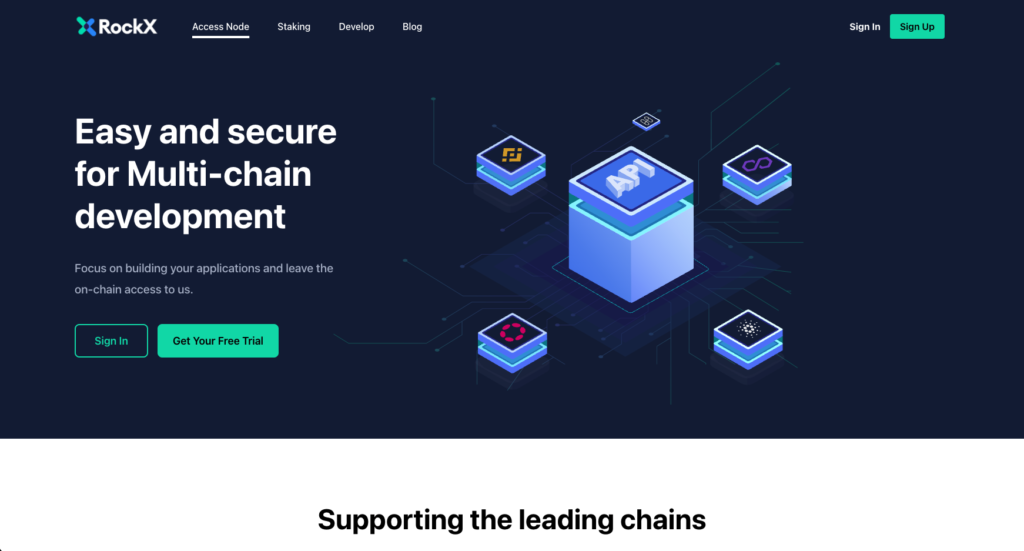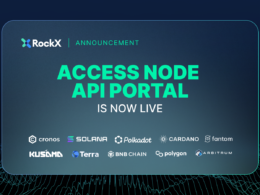There are many reasons why you should build on Kusama. For starters, Kusama is a highly scalable network that can support a large number of users and transactions. It is also designed to be a secure and reliable platform that can be used for a variety of applications. Kusama’s active community of developers who are constantly working on new and innovative applications further makes it an attractive option.
As an experimental development environment, Kusama (KSM) provides teams with an opportunity to test and optimise new features and early versions of projects, preparing them for deployment to the Layer-1 blockchain Polkadot (DOT). Although Kusama is a parachain on Polkadot, they are not the same thing.
On top of all this, Kusama is backed by large and well-funded organisations, Web3 Foundation and Parity Technologies, which means it has the resources to continue growing and evolving.
What is Kusama (KSM)?

Kusama was founded in 2016 by the creators of Polkadot, Gavin Wood, who is also the co-founder of Ethereum, Peter Czaban, and Robert Habermeier.
It is an experimental version of Polkadot designed to provide developers with a massively interoperable and scalable framework. This blockchain platform is built on Substrate, a framework for developing customised blockchains that can be run entirely in an autonomous mode.
Unlike other blockchain networks, Kusama provides a live test environment for networks, allowing developers to assess the effects of changes they are planning to make before they are deployed to the Polkadot mainnet.
Kusama has its own native token, KSM, to power computation and give holders the ability to participate in securing the network and voting on upgrade proposals. Trading at $24.86, as of writing, KSM is down 96% from its all-time high (ATH) hit in May 2021, according to CoinGecko.
KSM’s price performance, however, is not an outlier but rather in line with the broad cryptocurrency market, which is experiencing a bear market, with the total crypto market capitalisation currently under $900bln, down from its $3 trillion peak.
Developments in Kusama in 2022
Kusama is an attractive option for startups, as Kusama provides a more cost-effective build space for blockchain networks. It basically allows developers to create and deploy a pseudo chain, or try out the Polkadot governance, stake, nominating, and verification features in a live environment prior to releasing the Polkadot governance to the Polkadot blockchain.
Kusama is designed to serve as a testing ground for developers looking to innovate and launch their own blockchains. It can serve as a prepnet before launching Polkadot, although many projects choose to stay on Kusama for their final products.
Most recently, KILT Protocol, a blockchain identity protocol for generating self-sovereign, verifiable credentials and decentralized identifiers (DIDs), became the first parachain to accomplish a full migration from the Kusama Relay Chain to the Polkadot Relay Chain.
This migration which was the first instance of a parachain taking the upgrade path from Kusama to Polkadot marked a significant technical milestone for the ecosystem. “This demonstrates an important use case for the ‘canary network’ model pioneered by Polkadot, giving Web3 projects a place to stress-test their technology in a real-world environment and mitigate risk before upgrading to a more stable production network,” said the team.
Last month, the community also voted to add a more decentralised and robust Polkadot OpenGov to Kusama, enabling more tracks and proposals at once. The new governance model is also simpler, with no council or committee, no alternating timetable, or public proposal queue.
2022 was a big year for Kusama as they achieved two batches of parachain auctions, painting an encouraging picture. With the successful completion of two batches of auctions, the number of parachains on Kusama increased to a total of twelve.
This year, an upgrade to Statemen was also introduced, launching a new parachain functionality phase. Governance-allocated parachain slots were also introduced to help the entire network realize the benefit of valuable parachains that would otherwise be underfunded due to the free-rider problem.
What’s Coming Up for Kusama in 2023
Now, going into 2023, the multi-chain network is preparing for some big things, including parachain scalability, parachain development, relay-chain governance, cross-chain communication, common-good parachains, bridging to other ecosystems, and staking.
Toward the end of 2022, Parity Technologies updated the community on what is ahead for the Polkadot and Kusama ecosystems. As stated above, the overhaul of governance is already happening in Kusama. In addition to that, the team is working on Asynchronous Backing, which is a set of major optimisations to the parachain consensus protocol.
In order to improve the scalability of each parachain, an Asynchronous Backing update will shorten the block time for parachains by half to just 6 seconds and increase the amount of space available to each block by a factor of 5-10 as well as allow parachain blocks to be ‘reused’ when their first attempt at making it onto the relay chain fails. The team anticipates this update will improve the TPS capacity of the network to between 100,000 and 1,000,000 without affecting the security guarantees made by the network.
“This is a major scalability improvement which will both increase the amount of work every parachain can do and will optimise network performance to allow for more parachains to be registered,” stated the team.
Parity’s bridges team is also working on a Polkadot<>Kusama bridge, which will be a message-routing service within each network. With blockchain interoperability the core thesis of Polkadot, the team is now working on the third version of XCM, which is for cross-chain communication inside or outside the Polkadot ecosystem. XCMv3 will include support for bridging to external networks, improved fee payments for operations, NFTs, and APIs for querying and invoking pallets on other chains.
As for making it easy to build in the Polkadot ecosystem, Parathreads will be introduced, which are pay-as-you-go parachains and represent a simple, easy, and accessible entry point for launching an L1 chain on top of Kusama. Parathread is estimated to launch in Q1/Q2 2023.
The team is also working on nomination pools, which allow users to permissionlessly create “pools” of stake which others can join, along with a fast-unstake feature to facilitate the migration of those nominators who are not earning rewards to nomination pools.
How to Build on Kusama

Kusama offers a tremendous opportunity for businesses, markets, and applications looking to transition to Polkadot but at a low cost, fast speed, and with low barriers to entry, making Kusama perfect for early-stage startups looking to move quickly and iterate.
Because Kusama features support for smart contracts and high-scalability chains and supports both private and public blockchains, the vast array of applications you can build on Kusama is astounding.
But to build on Kusama, you need to connect to an API. RockX is one such prominent node API provider that gets you instant access to robust and scalable infrastructure to start your Kusama journey. You can immediately start building or trading, or exploring data on Kusama, while RockX manages and maintains the node for you.
The access node API provider gets exclusive access to Kusama through its public shared and dedicated nodes.
Its public shared nodes are highly scalable public network node infrastructure accessed via your exclusive API Keys. They are of further two types: full nodes store full blockchain data that can be used to replay the current state of the blockchain ledger, including the transaction, timestamp, and blocks. Archive nodes are another type that not only stores full blockchain data but also an archive of historical states, allowing you to access past states of a chain in a fast manner. These are particularly helpful in dApp development, where the need for historical information is essential.
Meanwhile, RockX’s dedicated nodes are public network nodes deployed exclusively for the user. It is a premium solution that allows you to leverage the entire node solely for your blockchain-based projects. Here, dedicated full nodes usually require less storage and cost less than dedicated archive nodes. On the other hand, because dedicated archive nodes store complete blockchain data and an archive of historical states, they require more storage and cost more than dedicated full nodes.
Now, to avail of these services, RockX gives you the option to start with its free standard plan. And if you want to upgrade, you can either go for the growth standard plan or simply boost your daily requests with two types of Add-Ons; mini and large.
Overall, RockX ensures the best user experience, high availability, and dedicated customer support.









